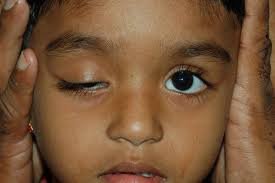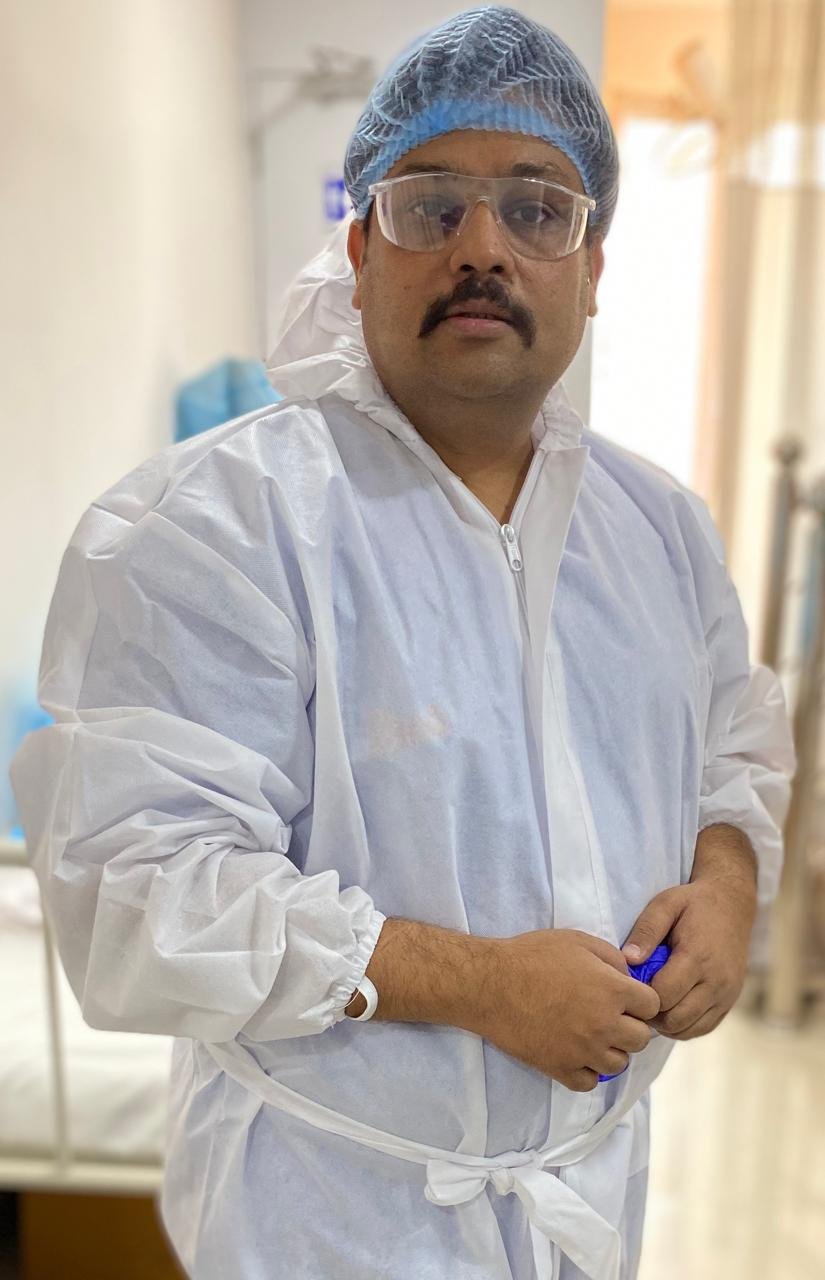Paediatric Eye Treatment

Caring for Young Eyes: Expertise and Compassion.
AIY Eye Care specialises in pediatric eye exam. We try to ensure that young children's vision develops optimally. Our skilled eye surgeon, Dr. Vivek Kumar Jain, offers a comprehensive range of treatments for any and all diseases affecting children's eyes.
At AIY Eye Care, we believe that every kid deserves to have good vision. We are committed to pediatric treatment since early identification and treatment may have a significant influence on a child's long-term visual health and development.
Why is it necessary to seek pediatric eye exam?
- Early detection and treatment of any eye problem in youngsters will safeguard their eyesight and maximise their potential for visual function.
- Healthy eyesight is directly tied to a child's cognitive, social, and educational development.
- Long-term results: Early therapy allows youngsters to reach their full visual potential while avoiding future difficulties.
How is pediatric eye treatment carried out?
Dr. Vivek Kumar Jain examines our pediatric eye care procedure by conducting a thorough evaluation. This varies from:
- Brief History: Collect information about the child's medical history, symptoms, and family history or issues with the eyes.
- Optometry Test: This is the measurement of a child's clear vision at some distances.
- Eye Test: A proper examination of a child's eyes using particular instruments to determine a type of disease.
- Diagnosis: Determine what the root cause of an eye problem could be
- Therapy Plan: A customized therapy plan a child might need, unique to his needs, including: Spectacles, contact lens, and correction of vision are not surgical procedures and may be provided.
- Surgical Interventions: If the measures mentioned above are found to be ineffective or inadequate, then we provide for a series of surgical interventions to treat eye disorders.
- Prescription Adjustments: We regularly reassess your child’s vision to determine if any changes in prescription or treatment are needed.
- Ongoing Support: Our team provides you with detailed instructions and tips to ensure your child maintains eye health at home and in daily activities.
What We Offer With Our Pediatric Eye Treatment?
Our pediatric ophthalmologist gives personal attention to each child with warmth and child-friendliness
- Advanced care for young minds
- Seasoned Eye Surgeon
- Early detection and intervention
- Individualized treatment plans
- Latest technology
- Gentle and child-centered setup
- Wide variety of services
- Pediatric Disease Treatment
- Pediatric Neuro-Ophthalmology Care
- Pediatric Conjunctivitis Treatment
- Pediatric Glasses and Lenses
- Non-surgical and Surgical facilities
- Visual Therapy
- Post-operative care
- Parental Education
- Coordination with other Pediatricians.
- Reasonable schedules for appointments
- Reasonable Charges
- Pediatric Treatment
- Pediatric Management
- Amblyopia Treatment
- Pediatric Vision Screening

Do your child has problems in his eyes?
Schedule an appointment with Dr. Vivek Kumar Jain now to learn more about pediatric treatment today.
Book An AppointmentFrequently Asked Questions
1When do I take my child to see a pediatric ophthalmologist?
Your child should undergo the following eye examinations (i) 6 Months: Eye exam to identify any congenital eye disease or strabismus. (ii) 3 years: Appraisal of visual development and detection of refractive errors. (iii) Before entering school: so that he/she may have clear vision for learning. (iv) If you notice any changes in the eyes of your child or in their vision.
2What to anticipate from a pediatric eye examination?
A pediatric eye exam will probably include the following components: (i) Elaborated Medical History: Information about the health, visual development of your child, and your family history (ii) Visual Acuity Testing Measures how well your child can view at different distances. (iii) Optic examination: Specialized instruments will be used to check your child's eyes for any anomaly. (iv) Pupil dilation is the dilation of your child's pupils so that the retina and other inner tissues can be seen clearly.
3What are the most common causes of eye problems in children?
Some of the frequent causes of visual impairment in children include; (i) Strabismus (lazy or crossed eyes) (ii) Amblyopia (Lazy Eye) (iii) Refractive errors (nearsightedness, farsightedness, and astigmatism). (iv) Congenital cataracts. (v) Glaucoma (vi) Retinal Diseases
4How are pediatric eye defects treated?
Pediatric eye disorders can be treated using any or a combination of the following: (i) Glasses or contact lenses? To correct refractive disorders. (ii) Vision therapy. This may be recommended for a child to enhance coordination and focusing ability and promote binocular vision. (iii) Surgery: Medical surgery is prescribed for conditions related to the eyes, such as strabismus, cataract, or glaucoma.
5At what age should my child have their first eye exam?
The American Academy of Ophthalmology recommends that children have their first eye exam at 6 months of age. After that, additional eye exams should take place at age 3 and again before they enter school. Regular exams should continue throughout childhood to monitor their eye health.
6What are some common eye problems in children?
Some common pediatric eye conditions include:
- Refractive Errors: Nearsightedness, farsightedness, and astigmatism.
- Strabismus (Crossed Eyes): A condition where the eyes don’t align properly.
- Amblyopia (Lazy Eye): A developmental problem where one eye doesn’t achieve normal vision.
- Conjunctivitis (Pink Eye): Infections or allergies affecting the eye’s surface.
- Blockage of the Tear Ducts: Common in newborns and infants. Early detection and treatment are crucial to prevent long-term vision problems.
7How do I know if my child has a vision problem?
Some signs that your child may have a vision problem include:
- Squinting or rubbing eyes frequently.
- Complaining of headaches or blurred vision.
- Difficulty reading or seeing objects at a distance.
- Eye turning in or out (strabismus).
- Holding reading materials close to the face. If you notice these signs, it’s essential to schedule an eye exam for your child.
8Is it safe for children to wear contact lenses?
Yes, children can wear contact lenses, but they require proper training and guidance. Most children can start wearing contact lenses around age 8 or 9, depending on their ability to follow proper hygiene and care instructions. Contact lenses are a great option for children with refractive errors, especially if they are active in sports.
9How can I protect my child’s eyes from UV damage?
Protecting your child’s eyes from harmful UV rays is important for long-term eye health. Ensure your child wears sunglasses that block 100% of UVA and UVB rays when outdoors. Wide-brimmed hats can also help protect their eyes from direct sunlight. Encourage them to wear protective eyewear during outdoor activities and sports.
10How are refractive errors in children treated?
Refractive errors such as nearsightedness (myopia), farsightedness (hyperopia), and astigmatism can be corrected with eyeglasses or contact lenses. In some cases, pediatric eye doctors may also consider vision therapy or surgical options once the child is older. Regular eye exams are essential to monitor changes in your child’s prescription.
Consider AIY Eye Care because of
Avail yourself of the expertise and experience of Dr. Vivek Kumar Jain is one of the top-rated ophthalmologists with over 15 years of experience.
very lengthy comprehensive eye exams to treatment for glaucoma, cataracts surgery, LASIK, and many more.
We make sure that you enjoy an aesthetically pleasing and satisfying experience getting an eye treatment.

